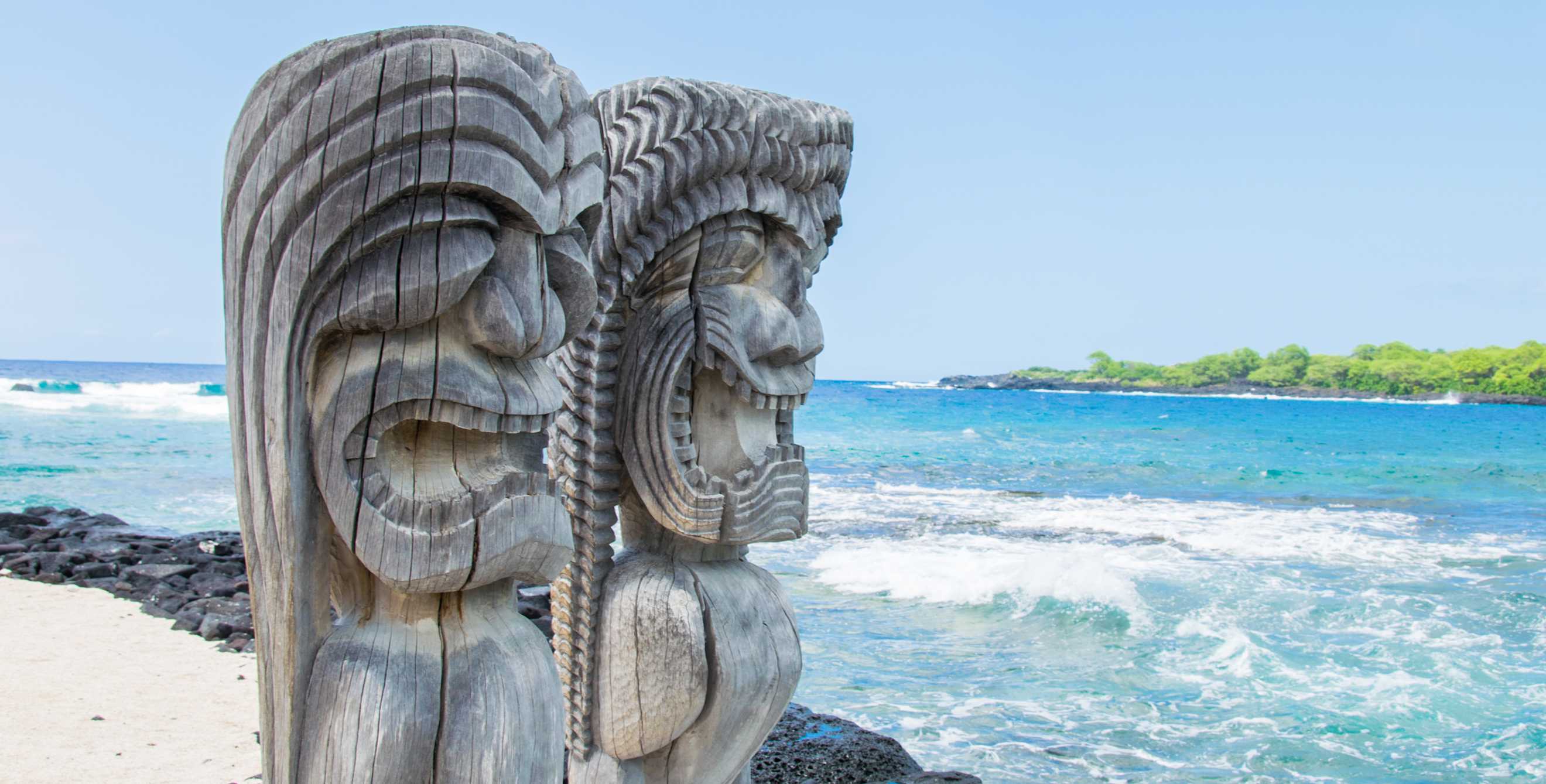
Hawaii's Sacred Refuge: Pu‘uhonua o Honaunau National Historical Park
Visit the site of a sacred temple on the Big Island.

On the island of Hawaii, just 22 miles south of Kona's bustling beaches and bars, tranquil Pu‘uhonua o Honaunau National Historical Park evokes early culture. The 420-acre seaside enclave includes the site of a pu‘uhonua, a place of refuge for defeated soldiers, noncombatants during war, and those who broke kapu, the Hawaiian code of behavior regulating everything from fishing seasons to human relations. The park also encompasses royal grounds, a massive stone wall erected more than 400 years ago, and the site of an abandoned village.
A half-mile walk winds through the place of refuge and the adjacent area where ali‘i—the noble chieftain class— once gathered and where kapu forbade any commoner to enter or even cast a shadow. You'll see brackish ponds that held fish for royal dining, two stone heiau (temple) platforms, and replicas of thatched-roof structures. Cultural demonstrators are often on hand to show how early Hawaiians wove capes or carved fishing hooks from bone.
Wooden statues representing Lono, the god of agriculture, rainfall, and peace, surround the Hale o Keawe, a rebuilt temple and mausoleum.
"The mausoleum once held the bones of 23 chiefs," says Shane Akoni Nelsen, who conducts Lono ceremonies in the park. "Their mana, their spirit, is what makes the pu‘uhonua sacred today."